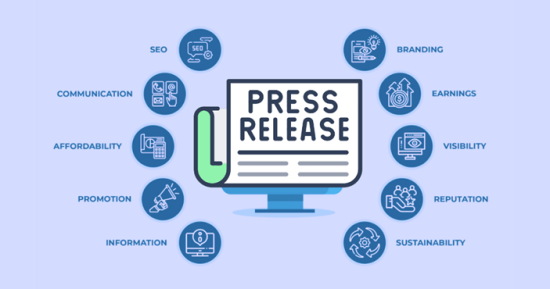
Are you looking to start your own business without breaking the bank? In today’s digital age, dropshipping offers an enticing opportunity to become an entrepreneur with zero upfront costs. Yes, you read that right – it’s possible to start dropshipping for free in the United States! But how exactly can you launch a dropshipping business without any investment? How does this zero-investment business model work? And what steps should you take or how to start dropshipping for free?
Unlock the secrets of launching a successful dropshipping business in the US without spending a dime. Our step-by-step guide will guide you to start your venture, regardless of your experience level.
How to Start Dropshipping for Free in the US
Understanding Dropshipping as a Zero-Investment Business Model
Dropshipping allows entrepreneurs to start an online store without significant upfront investments, acting as a middleman between customers and suppliers. Instead of managing inventory or order fulfillment, you focus on marketing and customer service while suppliers handle storage and shipping. When a customer places an order, you forward the details to your supplier, who ships the products directly to the customer. This model eliminates inventory management and financial risks associated with traditional retail. With low entry barriers, dropshipping is ideal for aspiring entrepreneurs with limited capital, enabling them to launch an online store with minimal financial risk.
Dropshipping offers flexibility and scalability, allowing you to offer a wide range of products without upfront inventory costs or storage concerns. For the financial support, you can apply for several loans for the business purpose and even get no credit loans. This model lets you quickly adapt to market changes and test new products, scaling operations easily by partnering with additional suppliers. In the following sections, we’ll guide you through starting a dropshipping business, identifying profitable niches, selecting reliable suppliers, and optimizing for success.
Identifying Your Dropshipping Niche and Products for Success
When starting a dropshipping business, one of the crucial steps to ensure success is identifying your dropshipping niche and selecting profitable products. By targeting a specific niche, you can streamline your marketing efforts and cater to the needs of a specific group of customers. Here, we will provide you with valuable insights on how to identify the right niche and choose products that have high market demand and potential for profitability.
Evaluating Market Demand and Trends
Before diving into your dropshipping venture, it’s important to evaluate the market demand for various products. Conduct thorough research to identify popular trends and emerging markets. This will help you understand what customers are currently looking for and allow you to capitalize on these opportunities. Choose products that have a consistent and growing demand, ensuring a steady flow of customers for your online store.
Interest Alignment and Passion Niches
While evaluating market demand is essential, it’s equally important to consider your own interests and passion when selecting a niche. Building a business around something you are passionate about will not only make the journey more enjoyable, but it will also reflect in your marketing efforts and customer interactions. Look for passion niches where you have knowledge or experience, as this will give you a competitive edge in the market.
Profit Margins and Cost-Effective Product Selection
When choosing products for your dropshipping store, consider the potential profit margins and the cost-effectiveness of sourcing those products. Look for products with attractive profit margins that will allow you to generate a decent income. Additionally, focus on selecting products that can be sourced at a reasonable cost without compromising quality. This will help you maximize your profits and ensure the sustainability of your business.
By following these strategies, you can effectively identify your dropshipping niche and select profitable products for your online store. Remember to evaluate market demand and trends, align your interests with passion niches, and prioritize profit margins and cost-effective product selection. This careful consideration will set a solid foundation for your dropshipping business and increase your chances of long-term success.
Select A Reliable Dropshipping Supplier
When starting a dropshipping business, selecting a reliable dropshipping supplier is crucial for your success. Partnering with trustworthy dropshipping partners ensures that your customers receive high-quality products and have a positive experience, leading to customer satisfaction and repeat business. To find a reliable supplier, there are a few key considerations to keep in mind.

Selecting Trustworthy Dropshipping Partners
When choosing dropshipping partners, it’s important to thoroughly research and evaluate their reputation and track record in the industry. Look for suppliers with a proven history of reliability, prompt order fulfillment, and excellent customer service. Additionally, consider the supplier’s inventory variety and availability, as well as their ability to handle large order volumes efficiently.
The Importance of Supplier Reviews and Ratings
One valuable resource for evaluating dropshipping suppliers is customer reviews and ratings. Online platforms and directories, such as supplier review websites, provide insights into other entrepreneurs’ experiences with different suppliers. Pay close attention to reviews that highlight delivery times, product quality, and overall satisfaction. Positive reviews and high ratings indicate a reliable supplier that you can trust.
Navigating Supplier Relationships and Expectations
Building a strong relationship with your dropshipping supplier is essential for maintaining a smooth and successful business. Effective communication, mutual understanding of expectations, and transparency in terms of product availability, pricing, and shipping arrangements are keys to a reliable supplier relationship. Regularly review and assess your supplier’s performance, and address any issues or concerns promptly to maintain a productive partnership.
By following these guidelines for selecting a reliable dropshipping supplier, you can ensure a seamless and efficient supply chain, enabling you to focus on growing your business and providing exceptional service to your customers.
Choosing the Right Ecommerce Platform for Dropshipping

When starting a dropshipping business, one of the crucial decisions you’ll need to make is choosing the right ecommerce platform. The platform you select will serve as the foundation of your online store and play a significant role in the success of your dropshipping venture.
There are various options available, but two popular choices for dropshipping are Shopify and WooCommerce. Both platforms offer unique features and benefits that can help you build a successful online business without any financial investments. Let’s explore each of these options:
Shopify: A Powerful and User-Friendly Solution
If you’re looking for a user-friendly and all-in-one solution, Shopify is an excellent choice. It is a complete dropshipping ecommerce platform that allows you to create and manage your online store effortlessly. With its intuitive interface and extensive range of features, you can have your store up and running quickly.
Shopify provides a variety of customizable templates and themes, ensuring that your store has a professional and visually appealing design. Additionally, it offers seamless integration with numerous payment gateways, making it convenient for both you and your customers.
Moreover, Shopify offers a range of apps and plugins to enhance the functionality and capabilities of your online store. These tools can help you streamline your dropshipping operations, from inventory management to marketing and customer support.
WooCommerce: A Flexible and Customizable Platform
If you prefer more control over your online store, WooCommerce is an excellent option, transforming your WordPress site into a fully functional e-commerce store. It offers high flexibility and customization, giving you complete control over design and functionality, along with various extensions for added features. WooCommerce leverages WordPress’s CMS to create engaging, SEO-friendly product pages and blog posts, attracting organic traffic and increasing visibility in search results.
Both Shopify and WooCommerce offer a range of pricing plans, including free options. When choosing between them, consider scalability and features that align with your business goals. WooCommerce provides extensive customization, while Shopify offers a more user-friendly, out-of-the-box solution. Select the platform that best meets your needs to set a solid foundation for your dropshipping business and ensure success in the competitive e-commerce industry.
Building Your Online Store Without Investments
Now that you have selected your dropshipping niche and products, it’s time to build your online store. The good news is, you can create a professional-looking online presence without spending a dime. Let’s explore how you can achieve this without any investments.
Setting Up a Professional-Looking Online Presence
Next, customize your store’s design to ensure a professional look. Many ecommerce platforms offer a range of free templates and themes that you can easily apply to your store. These templates are designed by professionals and can give your store a polished and professional appearance. Also make sure the brand name is available or already exist. Choose a template that aligns with your brand identity and customize it to suit your preferences. Remember to optimize your store for mobile devices as well. With more and more people shopping on their smartphones, it’s crucial to ensure that your store is mobile-responsive and provides a seamless browsing and purchasing experience.
Leveraging Free Templates and Themes
Free templates and themes are a great way to enhance the visual appeal of your online store without spending any money. They offer professionally designed layouts, color schemes, and font combinations, helping you create a visually appealing store that resonates with your target audience. Take advantage of these free resources and craft a store that stands out. When choosing a template or theme, consider your niche and target market. Look for designs that align with the products you are selling and create a cohesive brand experience for your customers. Customize the template to match your branding elements, such as your logo, colors, and typography, to create a consistent and memorable brand identity.
Creating a Strong Brand Identity with Zero Cost
Building a strong brand identity is crucial for trust and credibility, and it can be done without incurring costs. Start by defining your brand values, mission, and unique selling propositions to distinguish your store from competitors. Identify your target audience and tailor your brand messaging and visuals to connect deeply with them. Use free graphic design tools like Canva to create professional logos and social media posts. Leverage social media to engage with your audience, ensuring consistency in your brand voice, visuals, and messaging across all platforms.
Free Dropshipping Tools and Resources

Running a successful dropshipping business doesn’t have to cost you a fortune. In fact, there are numerous free dropshipping tools and resources available that can help you streamline your operations and take your business to new heights without any upfront costs. These tools and resources offer a range of benefits and features that can enhance your efficiency, productivity, and overall success in the dropshipping industry.
If you’re looking to optimize your dropshipping operations and make the most of your resources, here are some highly recommended free tools and resources to consider:
- Google Trends: Stay ahead of market trends and identify profitable product niches with this free tool from Google. It allows you to analyze search trends and discover popular topics and keywords related to your niche.
- Google Keyword Planner: Find the most relevant keywords for your dropshipping business and optimize your website and product listings for improved search engine visibility. This tool provides valuable insights into search volume, competition, and keyword suggestions.
- Canva: Create stunning graphics and branding materials for your dropshipping store without any design experience. Canva offers a wide range of free templates and customizable elements to help you create eye-catching visuals.
- Mailchimp: Build and manage your email list with this popular email marketing platform. Mailchimp’s free plan allows you to send automated email campaigns, track results, and engage with your audience effectively.
- Oberlo: Simplify product sourcing and order fulfillment with Oberlo, a powerful dropshipping app that seamlessly integrates with popular ecommerce platforms like Shopify. It enables you to import products from various suppliers directly into your store and automate the order process.
These are just a few examples of the many free dropshipping tools and resources available to help you succeed in your business. By leveraging these tools effectively, you can enhance your operations, save time, and ultimately maximize your profitability without incurring any additional costs.
Sourcing Products Effectively with Dropshipping Apps
Dropshipping apps have revolutionized product sourcing for online businesses, providing a convenient way to find and select items to sell. They offer extensive product catalogs from various suppliers, allowing exploration of different niches and identification of profitable products. Look for apps with advanced search filters to refine your search based on criteria like price, supplier location, and shipping times. These apps often integrate with ecommerce platforms like Shopify and WooCommerce, simplifying product imports and inventory management. Ensure the reliability of suppliers by checking ratings and reviews, and stay updated on market trends to source in-demand products effectively.
Pros and Cons of the Business
Before diving into the world of dropshipping, it’s important to consider the pros and cons of this business model. Understanding both the advantages and disadvantages will help you make an informed decision and set realistic expectations for your venture.
Advantages of Dropshipping
Dropshipping offers several advantages that make it an attractive option for aspiring entrepreneurs:
- Low Startup Costs: One of the biggest advantages of dropshipping is the minimal upfront investment required. You don’t need to hold inventory or manage a physical store, significantly reducing overhead costs.
- Location Independence: With dropshipping, you can run your business from anywhere in the world, as long as you have an internet connection. This geographic flexibility allows you to work remotely and enjoy a flexible lifestyle.
- Wide Product Selection: Unlike traditional retail models, dropshipping enables you to offer a wide range of products without the need for physical inventory. This gives you the opportunity to cater to various customer preferences and expand your product catalog easily.
- Scalability: Dropshipping allows you to scale your business quickly and efficiently. As you don’t need to worry about inventory management or order fulfillment, you can focus on marketing and expanding your customer base.
Disadvantages of Dropshipping
While dropshipping offers several advantages, it’s important to be aware of the potential challenges and drawbacks:
- Intense Competition: Dropshipping is a popular business model, leading to a highly competitive market. You’ll need to differentiate your brand and find unique selling propositions to stand out from the competition.
- Dependency on Suppliers: As a dropshipper, your success relies heavily on your suppliers’ efficiency and reliability. A bad supplier can result in delayed or incorrect shipments, ultimately affecting customer satisfaction and your reputation.
- Limited Control over Fulfillment: With dropshipping, you rely on your suppliers to handle shipping and order fulfillment. This lack of control can lead to issues such as delayed shipments, out-of-stock items, and poor packaging.
- Lower Profit Margins: While the low startup costs are advantageous, dropshipping often comes with lower profit margins compared to traditional retail. The need to share profits with suppliers and cover additional shipping costs can eat into your revenues.

Profit Maximization and Cost Management Tips
Running a successful dropshipping business requires a strategic approach to profit maximization and cost management. By implementing these proven tips and techniques, you can optimize your profitability and ensure financial success.
Pricing Strategies:
To maximize profits, carefully consider your pricing strategies. Conduct market research to determine the optimal price point for your products. Keep in mind factors such as competitor prices, customer perception of value, and the costs associated with sourcing and shipping. By finding the right balance, you can position your products competitively while ensuring a healthy profit margin.
Cost-Saving Measures:
Identifying and implementing cost-saving measures can significantly impact your bottom line. Look for opportunities to negotiate better terms with suppliers, bulk purchase products at discounted rates, and optimize shipping and fulfillment processes. Additionally, consider streamlining your operations by automating repetitive tasks, reducing overhead expenses, and leveraging technology to enhance efficiency.
Optimizing Profitability:
Maximizing profitability goes beyond just pricing and cost management. Focus on building customer loyalty and increasing customer lifetime value by providing exceptional customer service, investing in marketing strategies to attract new customers, and utilizing upselling and cross-selling techniques. Furthermore, continuously analyze your sales data and identify trends to identify opportunities for product expansion or niche penetration.
By leveraging these profit maximization and cost management tips, you can set your dropshipping business on the path to financial success. Remember, monitoring and adapting your strategies based on market changes is key to sustaining profitability in the dynamic world of dropshipping.
FAQs on Dropshipping Business
Do you need a license to dropship in the US?
No, you do not need a specific license to engage in dropshipping in the US. However, it is important to comply with local laws and regulations, such as obtaining the necessary business licenses and permits required in your jurisdiction. It is advisable to consult with a legal professional to ensure compliance with all applicable laws and regulations.
Is dropshipping worth it in the US?
Dropshipping can be a profitable business model in the US if executed correctly. It offers several benefits, such as low startup costs, no need for inventory management, and the ability to sell a wide range of products. However, it also comes with challenges, such as intense competition and dependency on suppliers. It requires diligent research, effective marketing strategies, and good customer service to succeed. It is important to carefully consider all aspects before diving into dropshipping in the US.
How do I find reliable suppliers for dropshipping?
Use dropshipping apps like Oberlo, Spocket, or SaleHoo to find suppliers. Check supplier reviews, ratings, and fulfillment statistics to ensure reliability. You can also reach out directly to manufacturers or wholesalers to establish a partnership.






